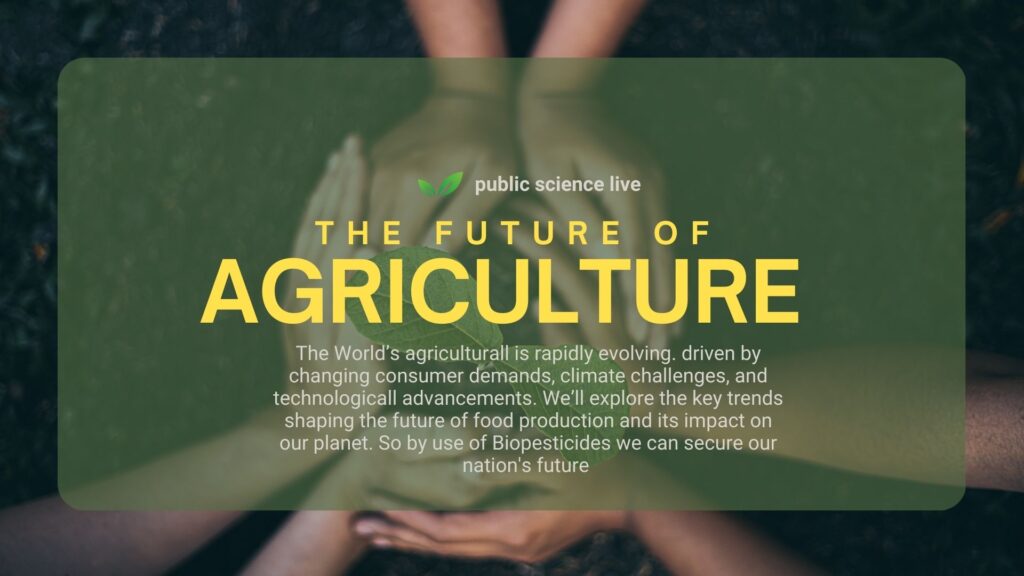
Contents
ToggleIntroduction
We remember a time when our soil was nutrients enriched and fertile, but over the past few decades it has started to degrade. One of the reason is the intensive use of chemical pesticides. In last few decades, farmers depend on chemical pesticides to protect their crops. While, these chemicals often leave harmful residues, damage soil health, and pose risks to human health and biodiversity. But farming doesn’t have to come at such a cost. Enter biopesticides the eco-friendly alternative that is reshaping the future of agriculture.
In this article i’ll break down what biopesticides are, why they’re better, real-world success stories, and how they could soon replace harmful chemicals on our farms.
What Are Biopesticides?
Biopesticides are natural substances or living organisms that control pests, weeds, and diseases in crops. Unlike chemical pesticides, they come from plants, bacteria, fungi, or minerals and are biodegradable.
Types of Biopesticides:
1. Microbial biopesticides
Made from living microbes like:
Bacteria (Bt) Bacillus thuringiensis→ Kills harmful caterpillars
Fungi (Trichoderma, Beauveria) → Stops pests & diseases
Viruses (NPVs) → Attack insect larvae
2. Plant-Based Biopesticides:
Nature’s Own Pest Control
Derived from plants and their extracts, these biopesticides use natural compounds to keep pests away—safe for crops, soil, and people.
Examples: Neem (Azadirachtin) → Insect repellent & growth disruptor
Pyrethrum (from Chrysanthemum) → Kills insect pests quickly
Essential oils (clove, eucalyptus, citronella) → Natural antifungal & insecticidal action
Rotenone, Ryania, Nicotine (traditional use)
3. Biochemical biopesticides
These are naturally occurring compounds that control pests by non-toxic mechanisms (not by killing directly). They interfere with pest behavior, growth, or reproduction.
Examples: Pheromones → confuse insect mating
Plant extracts → neem, essential oils, etc.
Natural growth regulators → disrupt insect life cycles
Repellents & attractants → guide or deter pests
4. Bioherbicides
Bioherbicides are natural weed killers made from living organisms (like fungi, bacteria, or insects) or plant-derived compounds. They suppress unwanted weeds without harming crops, soil, or the environment.
Examples: Colletotrichum gloeosporioides → controls invasive weeds
Phytophthora palmivora → targets strangler vine
Neem-based extracts → natural weed suppressants
Instead of killing everything (like chemicals), biopesticides target specific pests, making them safer for crops, people, and the planet.
Why Farmers Need Biopesticides
• Eco-friendly → No toxic residues in soil or food.
• Safe for health → Reduces risks of cancer, hormonal disruption, and pesticide poisoning.
• Supports biodiversity → Pollinators like bees and butterflies are not harmed.
• Slows resistance → Pests evolve slower against natural control agents compared to chemicals.
• Sustainable → Restores soil fertility and promotes long-term farming health.
Real-World Success Stories
1. Neem-based sprays in India → Farmers in cotton belts successfully reduced pesticide use by 50% using neem extracts.
2. Bt corn in the US → Widely used genetically modified corn carries Bacillus thuringiensis, which naturally fights off pests, reducing pesticide needs.
3. Bioherbicide trials on nutgrass (Cyperus rotundus) → Researchers are exploring eco-friendly weed control without harmful herbicides.
4. Organic farming boom in Europe → Biopesticides are a key driver of the growing organic food industry.
Common challenges are
• Short shelf life compared to chemicals.
• High initial cost of research and production.
• Farmer awareness gap — many farmers are still unfamiliar with their use.
• Regulatory hurdles — approval processes for biopesticides are often slow.
The Future of Farming with Biopesticides
The global biopesticide market is growing at double-digit rates and could surpass billions in the next decade. With rising consumer demand for chemical-free food, and stricter laws on pesticide residues, the shift toward biopesticides is inevitable.
Future farming will be:
• Cleaner → No toxic residues.
• Healthier → Safer for farmers and consumers.
• Smarter → Integrated pest management (IPM) combining biopesticides with modern tech.
References
- Liu, X., Cao, A., Yan, D., Ouyang, C., Wang, Q., & Li, Y. (2019). Overview of mechanisms and uses of biopesticides. International Journal of Pest Management, 67(1), 65–72. doi:10.1080/09670874.2019.1664789
- Subramanian, S., & Shankarganesh, K. (2016). Insect Hormones (as Pesticides). Ecofriendly Pest Management for Food Security, 613–650. doi:10.1016/b978-0-12-803265-7.00020-8
- EPA. Biopesticides. Available online: www.epa.gov/pesticides/biopesticides (accessed on 9 September 2017).

Very insightful sir😊👍✨